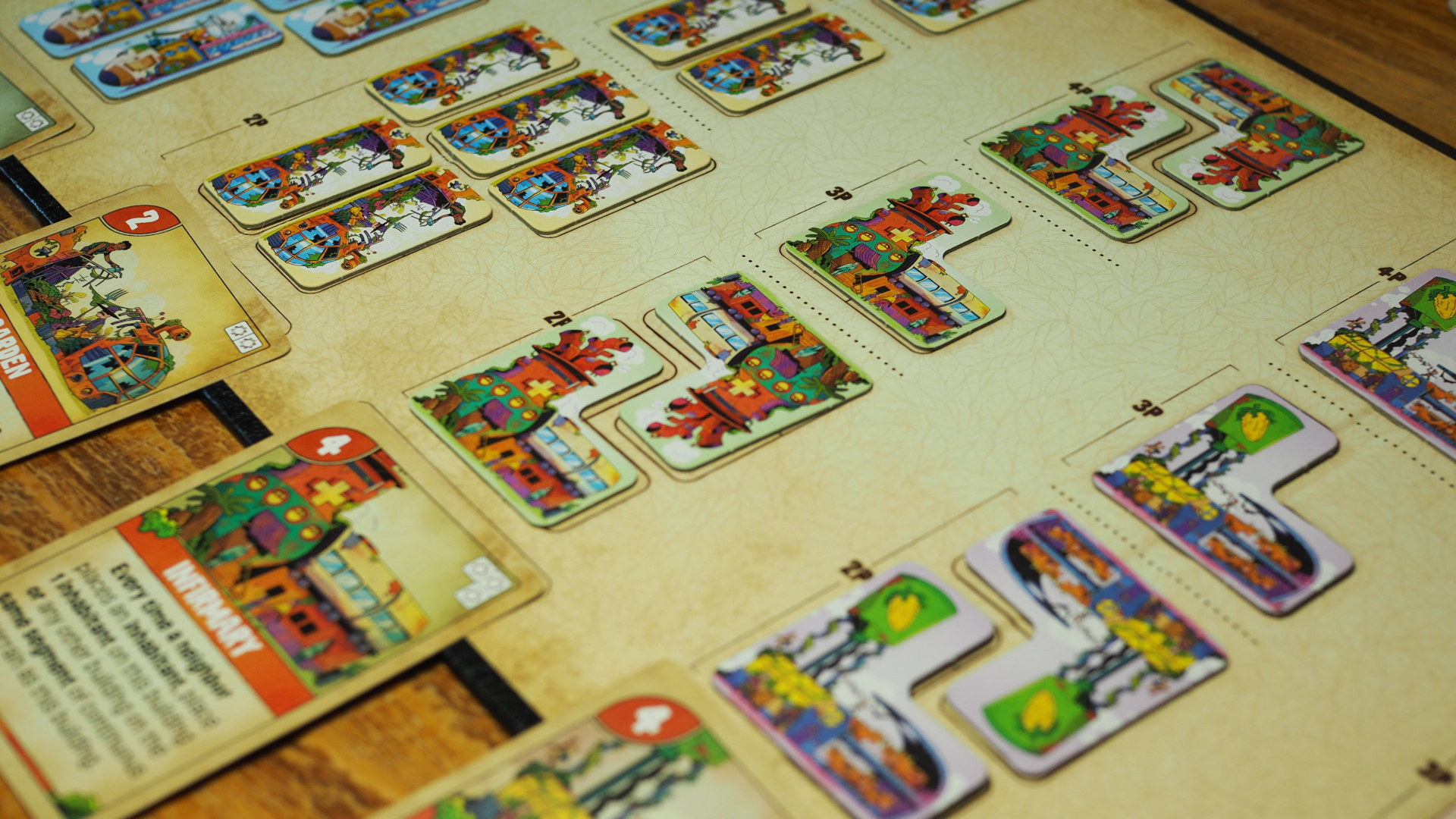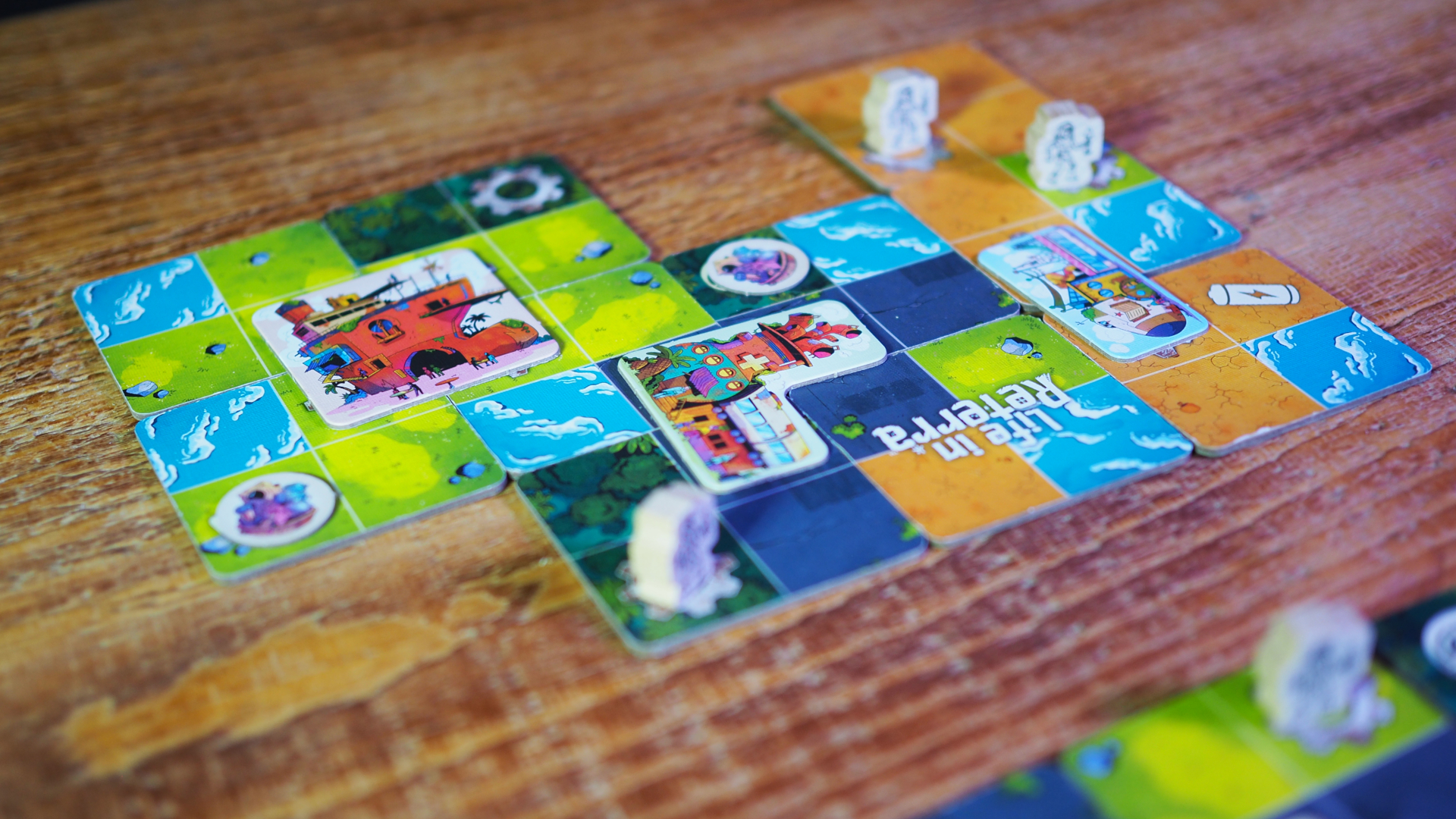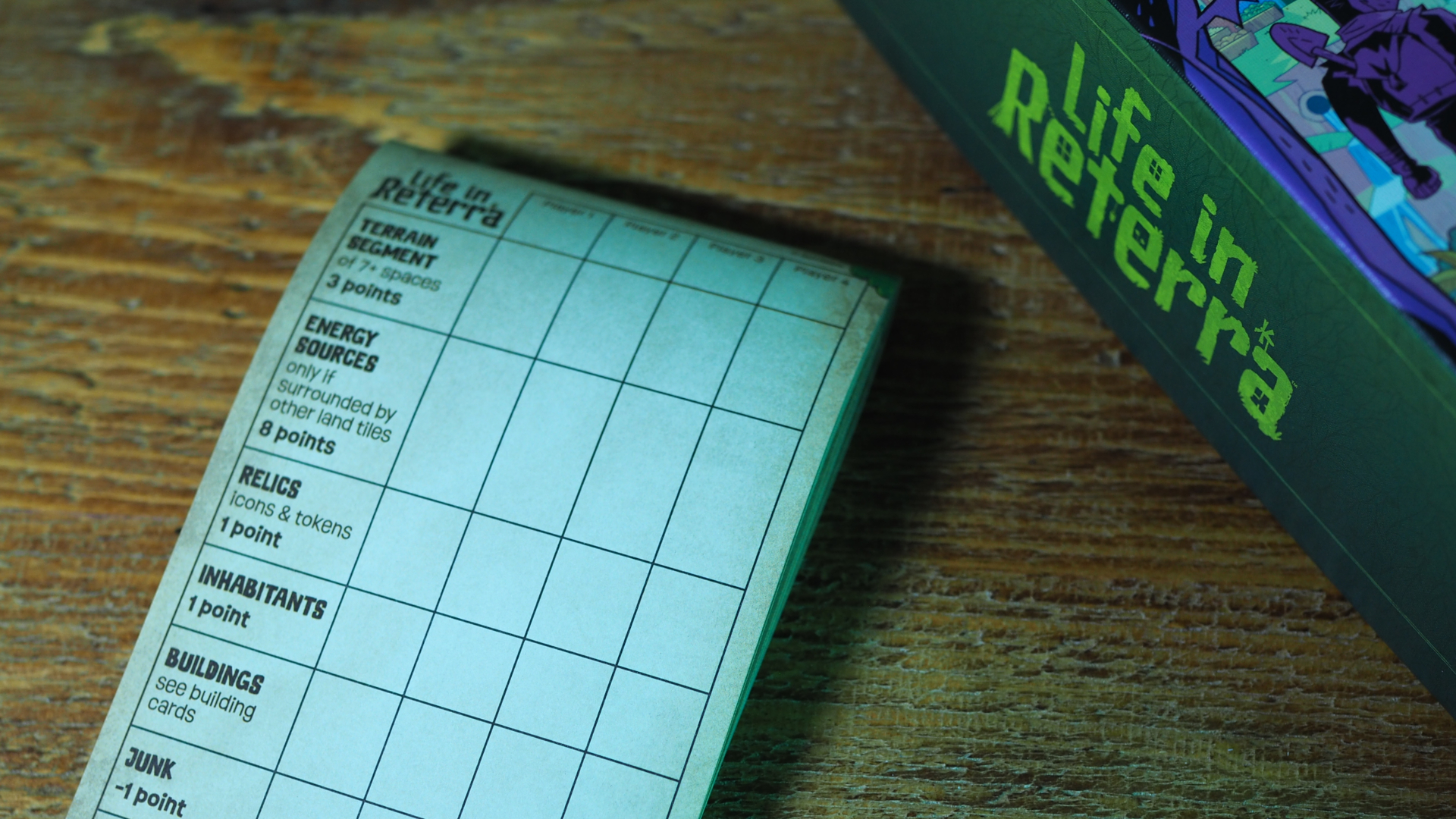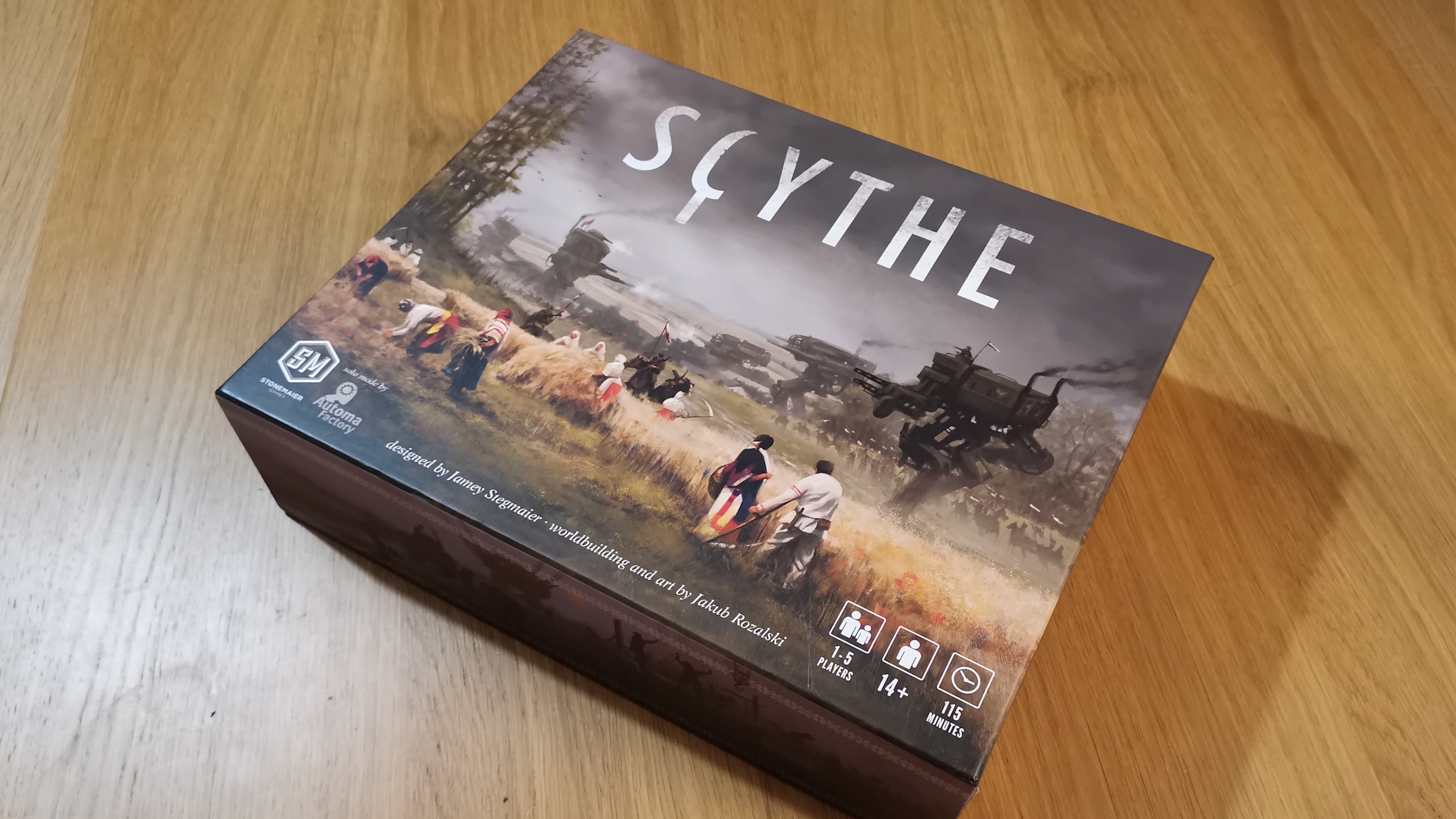GamesRadar+ Verdict
Few board games have hooked me as quickly as Life in Reterra did. Gameplay inspired by some all-time greats and ample replayability mean you'll be chomping at the bit to start over when a match ends. A unique, vibrant theme helps it stand out too, as does a premium-feel storage solution that competitors need to take notes from. I can see it becoming a modern classic, honestly.
Pros
- +
Accessible, but deep enough to keep you hooked
- +
Absurd degree of replayability
- +
Excellent storage solutions
- +
Appealing, unique art-style
- +
Doesn't drag on
Cons
- -
Strategy fans may find it too light
- -
...but board game newcomers could find it too complex
Why you can trust GamesRadar+
November 7, 2025: This review has been updated with our opinion of the game one year on, and whether we still think it's worthy of that original, five-star rating. (Spoiler alert: it is.) The ratings table in the 'should you buy' section has also been updated to match our current, more in-depthg format.
Life in Reterra shows the end of the world as we know it, but you'll feel fine. This isn't a grotty post-apocalypse; you won't find a single zombie or viking biker gang to fend off. There's also a distinct lack of "we were the monsters all along, actually." Instead, it's a cozy calamity. Nature is reclaiming civilization, relics of the past are being recycled, and everyone seems swell. It's weirdly uplifting.
Its gameplay is a fan of recycling too. Life in Rettera is inspired by some of today's best board games, and that leaves us with a moreish experience which is accessible yet strategic. Honestly, it took me by surprise; I rarely rave about new games after playing them, but this one? It's something special.
Features & design
Price | $29.99 / £29.99 |
Ages | 10+ |
Game type | City building |
Players | 2 - 4 |
Lasts | 30mins |
Complexity | Moderate |
Designers | Eric M. Lang, Ken Gruhl |
Publisher | Hasbro |
Play if you enjoy | Carcassonne, Catan, Wingspan |
- Tile-laying gameplay similar to Carcassonne
- Colorful apocalypse with a unique style
- Includes smart, high-quality storage solutions
Society may be over in this strategy board game designed by the legendary Eric M. Lang and Ken Gruhl, but it's not so bad. Nature is healing, and the remnants of humanity – us players – must rebuild from the odds and ends left behind.
Between two and four players will construct settlements by placing board tiles and filling them with buildings that grant either points or special abilities. Whoever gets the highest score by the time everyone has finished a 16-tile square will win. Simple, right? Sort of. Because there are so many ways to earn a living here (ranging from relic collecting to stacking the effects of your buildings) it's approachable but complex enough to keep you engaged.

Its visuals are just as memorable. Using a cartoon style bursting with verve, Life in Reterra is a far cry from the realistic settings you often see in the best adult board games. It's an appealing aesthetic without feeling kitsch.
The game is unexpectedly practical as well. So many fail to come up with storage solutions for their components, but Life in Reterra doesn't. It provides plastic, lidded trays for everything to fit neatly inside, and this is a rare – not to mention classy – move so far as I'm concerned.
Gameplay

- Tight, tense matches where every move counts
- Multiple sets of mix-and-match buildings give lots to do
- There's always another tactic or approach to try
Despite its post-apocalyptic vibe, Life in Reterra is all too relatable; there's never enough time to do everything you want. That's how it gets its (probably radioactive) claws into you. There's always something else you could have done each session, or a different approach you might have taken that could've turned the tide.
Weekly digests, tales from the communities you love, and more
This is due to the limited number of turns you've got per match. Seeing as the game ends once you've finished a four-by-four square of tiles (16 tiles in total), and you draw those from a communal pool or secret selection given to each player at the beginning of the match, dallying isn't an option. Life in Reterra's buildings often benefit one another if you can play them at the right moment too, so you'll need to come up with a plan faster than you can say "nuclear fallout." Sessions are unlikely to be predictable as a result.
This adds to the game's tantalizing blend of risk and reward. Because buildings can only be placed if they're touching a tile you just played (exactly like Carcasonne's meeples), you have to decide whether you'll wait for the perfect opportunity or make the most of what's in front of you in case things don't pan out later. Similarly, buildings can only be put onto spaces in the same biome.

Basically, a tile's orientation is every bit as important as where it goes in the first place. I learned that the hard way; I've been known to trick myself out of points because I didn't leave enough room for bigger buildings.
Seeing as there are match-wide challenges to chase as per Wingspan, you can earn a massive payday if you're able to think ahead. You get extra points for every biome numbering seven squares or more, for instance, and Restaurants only pay out if they're next to other Restaurants within the same biome. It's a fun juggling act.
This is what will keep you returning to Life in Reterra; you've always got a new approach to try, or something else to learn. As a case in point, there are three different sets of buildings (each containing five with unique modifiers on either side) within the core box. You can either play them as is, mix and match in suggested combos, or make your own pick-n-mix sets. That dramatically increases replayability.
OK, so there's not the depth or dazzling interconnectivity you'd expect in more complex strategy games such as Root or Dune: Imperium - Uprising. But then again, it isn't trying to compete with them. Life in Reterra is pitched as a 'lite' strategy game, and it manages to fulfil that promise with deft skill.
Now that we're more than a year on from my original review, I wanted to pop back and give my two cents on what I think of the game now. Simply put, I'm still in love with this game. It's not perfect by any means, but I continue to play and really enjoy Life in Reterra due to how flexible its mechanics can be. Having multiple building sets and being able to mix-n-match them keeps things interesting for the long haul.
Should you buy Life in Reterra?

If you want an accessible yet deeply compelling strategy game, you need to check out Life in Reterra. Those hoping for tactical masterclasses may be better off with the likes of Scythe, but for everyone else, it doesn't get much better. This is the kind of game you can play with your board game-loving friends and in-laws, which doesn't happen often.
It captures the magic of the classics, too. Do you love games like Carcassonne, Catan, and Wingspan? Life in Reterra will definitely be your jam.
Ratings
Criteria | Notes | Score |
|---|---|---|
Game mechanics | Life in Reterra combines mechanics from some of the best games around for a winning formula. | 5/5 |
Accessibility | Getting to grips with this game doesn't take long, and the pieces are distinct enough to be easily differentiated between. | 4/5 |
Replayability | Multiple building sets and the ability to mix and match them into new combos means you won't get bored any time soon. | 5/5 |
Setup and pack-down | Because you're building a settlement as you go, setting up is easy but packing away takes a bit longer. | 4/5 |
Component quality | Along with sturdy storage tubs, Life in Reterra boasts a memorable art style that really stands out. | 5/5 |
Buy it if...
✅ You want an accessible but compelling strategy game
Life in Reterra is very easy to get into, but there's enough bite here to keep most people invested and eager to play again.
✅ You're looking for something very replayable
Because there are so many ways to play Life in Reterra, and you can come up with near endless combinations of components, you won't get bored any time soon.
Don't buy it if...
❌ Clue is about as much as you can handle
If you're totally new to modern board gaming, this could be slightly too much. Try Carcassonne first and come back later.
❌ You're hoping for incredibly complex tactics
Fancy yourself as an armchair general who only likes games if they're mega complicated? Life in Reterra may lack depth for you.
How we tested Life in Reterra
This review was conducted using a copy of the game provided by the publisher.
I spent a few weeks testing Life in Reterra with a variety of players (ranging from matches against my wife to larger sessions with multiple people) to get a sense for how it handled in each instance. I also made sure I learned its mechanics based on the provided instructions alone to gauge how easy it is for newcomers. In addition, I played matches with each set of buildings to see how they compared to one another.
For a more comprehensive look at our process, see our guide to how we test board games, or the wider GamesRadar+ reviews policy.
Want more recommendations? Be sure to check out the best 2-player board games, or the best card games.

I've been writing about games in one form or another since 2012, and now manage GamesRadar+'s tabletop gaming and toy coverage. You'll find my grubby paws on everything from board game reviews to the latest Lego news.
You must confirm your public display name before commenting
Please logout and then login again, you will then be prompted to enter your display name.



